How to apply decorative plaster
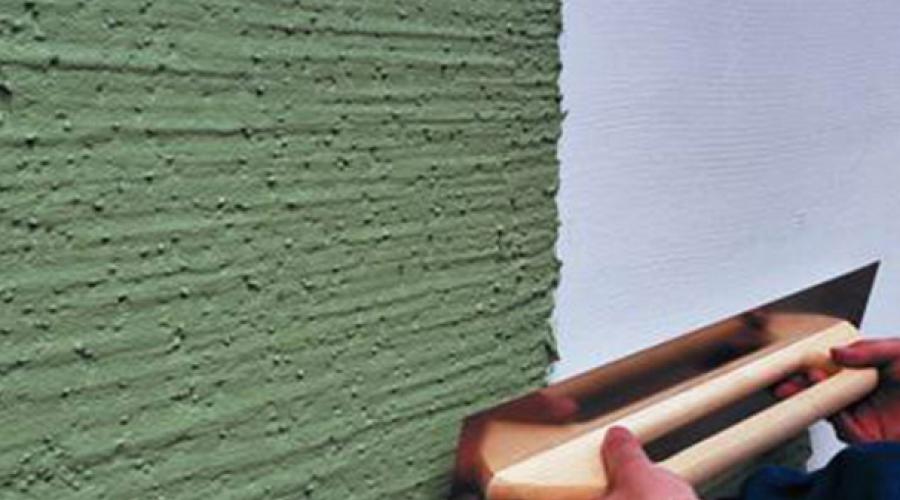
Repair and decoration of the walls of an apartment or house is often an unpredictable thing. Sometimes, during do-it-yourself repairs, a lot of new ideas are introduced into the original plan that can change the design style of the home furnishings. This happens when, after applying decorative plaster on most of the walls with your own hands, new ideas for decorating walls appear.
Ample opportunities for decorative plaster - it's good and bad
Especially if you are lucky to see interesting and fresh photos or videos about what is best to use and how to properly apply decorative plaster on the wall plane.
Before you enter into the temptation to change the original idea in the design of the walls with your own hands and apply a new pattern, it is worth soberly assessing a few key points:
- The cost of repairs, even if the main work on decorating the walls with your own hands and strictly following the original idea and estimate, always grows by 10-15% at least;
- It is not difficult to apply a new pattern in one room, but such a move may require reworking most of the plaster finish. Apply it with your own hands in other rooms, to preserve the style of wall decoration;
- Repair costs can double and result in a significant loss of time and effort.
Thanks to new materials and techniques for applying decorative plaster, even with your own hands you can achieve impressive results.
Advice ! With all the desire to make the most of the expressive possibilities of decorative plaster, it is worth dwelling on one initial idea for decorating walls and completing repairs at minimal cost.
All interesting thoughts about decorating the walls with your own hands can be collected and postponed until the next time. Perhaps there will be new money, new premises and new ideas.
When and how to apply decorative plaster
Modern wall design options allow you to create the most realistic imitations of various decorative surfaces, from broken stone to bas-relief images. But the main advantage of decorative plaster is the incredible flexibility in choosing the texture of the plane with your own hands. In fact, the use of plaster decor made it possible to apply real artistic images and whole paintings to the walls. Even 15 years ago, individual wall painting with their own hands was within the power of artist-designers, and such a pleasure cost a lot of money.

The more intricate the pattern, the more difficult it is to apply it to the walls. For example, without practice, not everyone can do decorative plaster with a moire effect, as in the video
A decorative composition in the style of a panel will require a good knowledge of the properties of the plaster and a lot of patience in working with it, but the resulting effect is worth it. The beauty and accuracy of the work can be assessed by the video
In such cases, it is better to apply the decor by the hands of specialists; it is very difficult to achieve such quality on your own.
Important ! In addition to artistic taste and knowledge of the technological intricacies of working with decorative plaster, it should be understood that applying the material to the surface is physically difficult, and the process will require considerable effort and endurance.
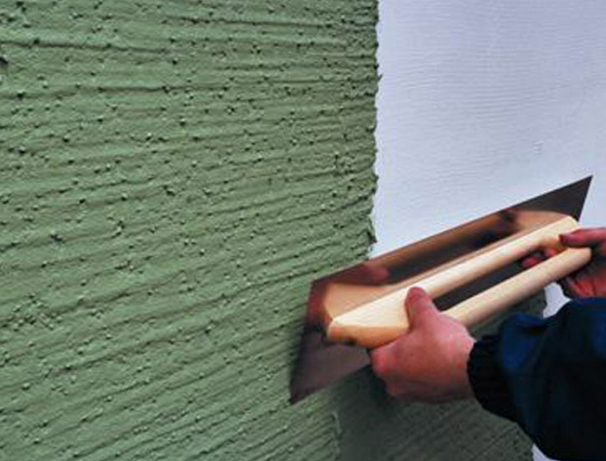
In the first experience of using decorative plaster, it is still better to choose the simplest version of the pattern and try to apply it yourself.
How to apply decorative plaster the easiest way
One of the most popular options for decorative plaster is lime composite compositions that imitate natural materials. Most often they use proven practice and long-term use of plaster:
- "Venetian composition", giving the texture of the wall in the form of an unimaginable number of intertwined relief elements;
- "Marmorino" and "Marseille", similar to the surface of marble calcite, with a network of inclusions and cracks and polished surface transitions;
- Imitation of the surface of natural limestone with an uneven, deliberately rough and scratched surface known as "Travertino".
Important ! All of the above decorative plaster compositions are very easy to apply on the wall with your own hands, obtaining almost 100% surface quality.
Venetian pattern of decorative plaster
The secret of the recipe is to use ordinary ready-made plaster mixtures - starting and finishing - to obtain decorative plaster. This cuts costs by about half. The initial plaster mass is prepared by mixing both mixtures in a 50/50 ratio in the amount necessary to apply the composition to 1-1.5 m 2 of the surface.
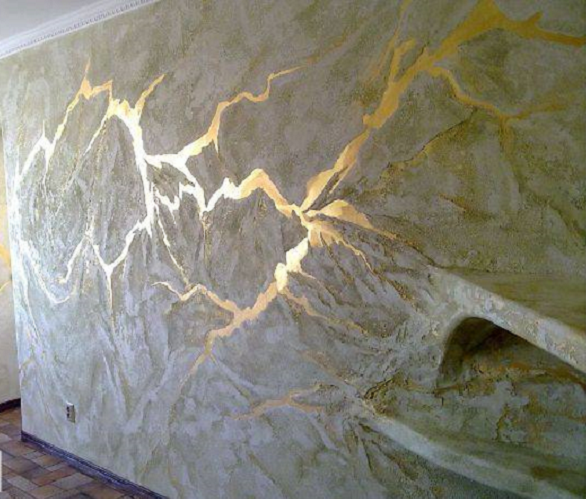
Before applying the composition, the walls are primed with an acrylic primer, and the composition is carefully applied with a spatula and trowel to a slightly dried surface. The thickness of the layer of decorative plaster is on average from 3 to 6 mm. As the decorative base is applied with a trowel on wet material, it is necessary to apply a relief pattern. The specifics of such work is well understood from the video
Important ! Sometimes there is a problem of the correct connection of two sections of the wall, on which a solution of decorative plaster is applied with a gap in time.
Most often this is due to the need to prepare a new portion of the plaster mass. Therefore, the boundaries of the sections have to be “passed” by the tool several times.
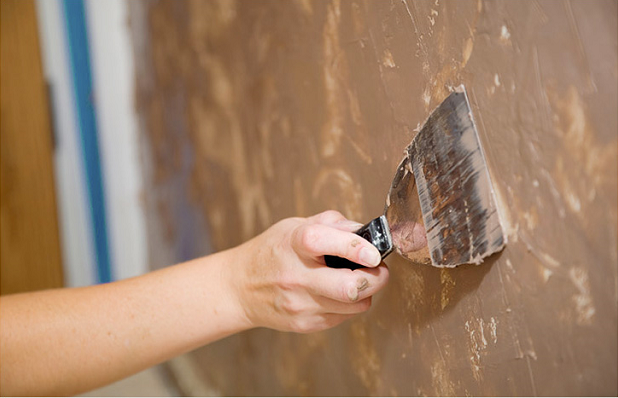
After a little drying, the relief pattern is rolled with a special tool that makes the pattern flatter and more expressive. As a finishing operation, which is the “highlight” of Venetian plaster, a tinting paint is applied to the surface of the wall with a roller, giving the plaster the color of “old silver”. To do this, in 250 gr. primers add about 50 grams of dye.
After the drawing dries, it is necessary to apply acrylic varnish with a small amount of glitter. Decorative plaster dries for quite a long time - up to two days, after final drying it acquires a slightly lighter shade.
Travertino, what could be easier
This is a plaster composition based on lime and calibrated quartz sand. If it is important for you to combine the beautiful texture of the surface with the benefits of lime plaster, then the choice is obvious. Among the advantages of the Italian formulation is the possibility of applying plaster even on cement ground of concrete or brickwork, subject to preliminary cleaning of the surface from dirt and deposits and applying a special primer mixture based on sandy quartz dust.
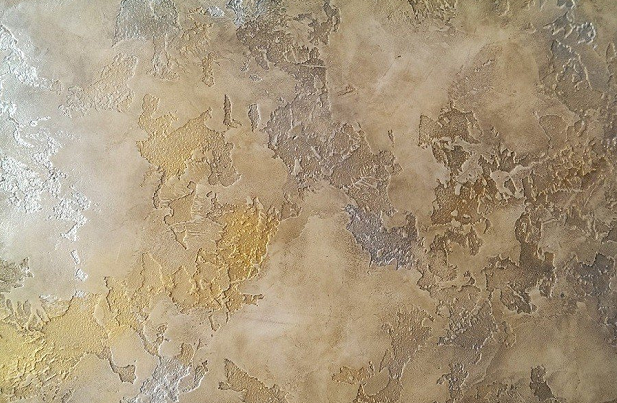
Such a primer will level and hide the "flaws" of the wall and improve adhesion to the decorative layer. On a prepared surface, such as drywall sheets or plastered walls, decorative plaster can be applied in one layer, but with an acrylic primer beforehand.
The decorative composition is applied with a spatula and a wide trowel, achieving a uniform layer, 3-4 mm thick. The plaster pattern must be applied with a roller with a porous surface, the process of surface formation itself is well understood from the video
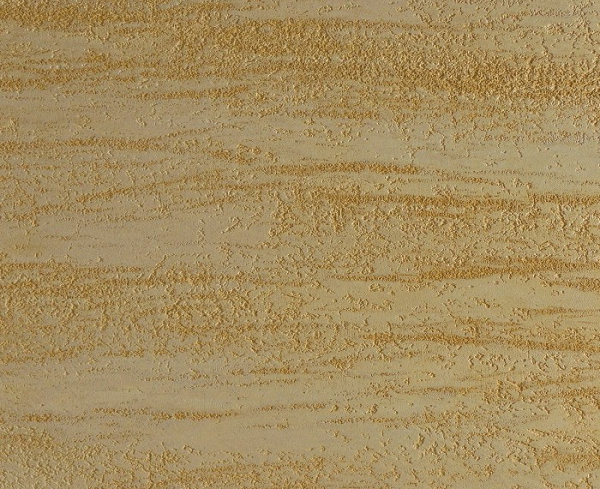
If you like "brick" wall surface ornaments, with the help of Travertino you can get a pattern of brickwork. To do this, strips of construction tape are glued onto the previously prepared wall surface, imitating the seams between brick blocks. Next, you need to apply plaster and separate the strips from the main layer, due to which a texture is formed that imitates silicate or ceramic bricks.
Conclusion
Simple compositions of decorative plasters do not mean their primitiveness in beauty or design. Most often, these options are used to apply the basis for hand-painting, painting or applying bas-reliefs from putty mass.